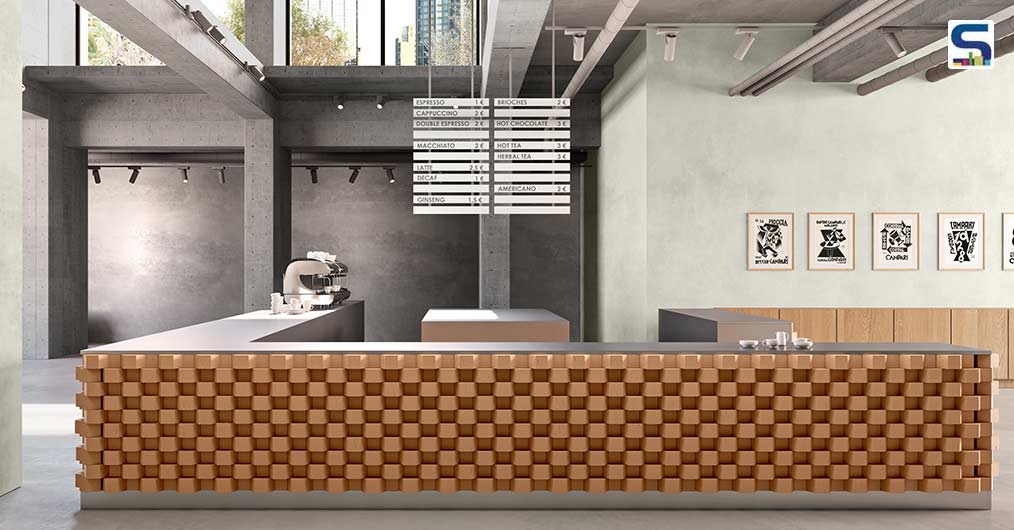
Industrial designer Konstantin Grcic has revamped one of the most ancient building materials – fired bricks – into a fashionable hexagon module that is both organic as well as geometric. Drawing inspiration from beehives, Hives is the new 3D element designed by Konstantin Grcic Design GmbH for the Italian brand Mutina. “I would have loved to design a rectangular brick but that has already been done. The hexagon is interesting because it is both geometric and organic. It looks technical but it was invented by nature,” informs Grcic.
 Above: The bricks can be installed in an upright and a flat orientation. Top: Made from terracotta, the brick retains its original warm shade and tactile texture.
Above: The bricks can be installed in an upright and a flat orientation. Top: Made from terracotta, the brick retains its original warm shade and tactile texture.
Made from terracotta, which possesses acoustic and thermal properties, the brick retains its original warm shade and tactile texture. The module is produced by extrusion, an artisanal technique that allows obtaining an element with an organic structure and always unique and unexpected details. According to Grcic, clay is the oldest known ceramic material, which has good structural, thermal and acoustic properties. “… and it is beautiful to look at. I like the raw quality of a brick which is a pure material. The red clay we are using for Hives adds a warm and pleasant colour,” adds Grcic.
 The hexagonal brick is the most efficient geometric design to achieve an almost infinitely expandable structure.
The hexagonal brick is the most efficient geometric design to achieve an almost infinitely expandable structure.
The hexagonal brick is the most efficient geometric design to achieve an almost infinitely expandable structure. Featuring a single module, Hives comprises a 13 cm X 22 cm, and 5 cm X 7 cm hexagonal brick which is impressively high on form and function. The brick’s original graphic pattern makes it ideal for indoor and outdoor applications including walls, architectural structures and furnishings, and decorative formation.

The bricks can be installed in an upright orientation to build dividing walls and in a flat orientation. Hives can be laid in courses and numerous patterns, also referred to as bonds. They can be positioned laid flush with each other or in a staggered arrangement, thereby producing a curved wall and furniture such as columns, counters and table legs. Hives can be used to build partition walls characterised by a pattern that plays with the juxtaposition of solids and voids.
Image credits: Mutina